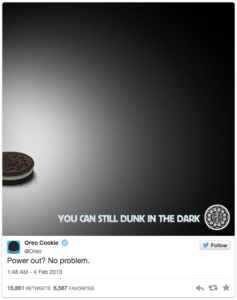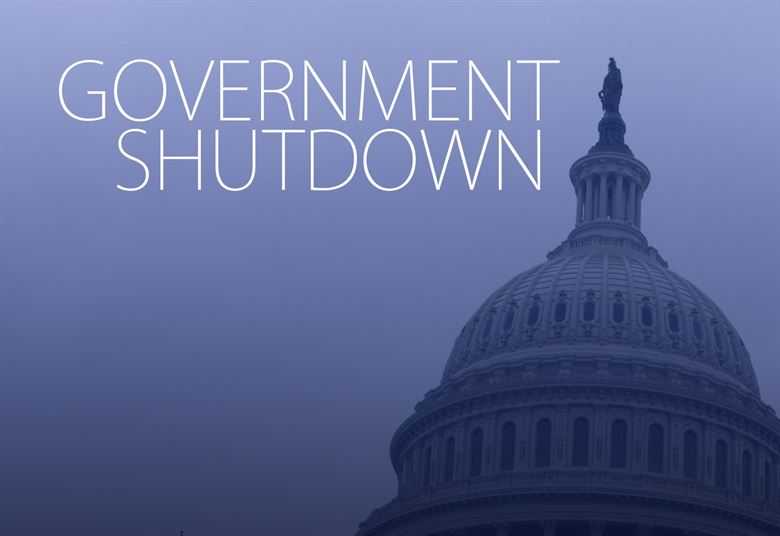The strategy of Real-Time Marketing (RTM) has been around for quite a while now, and yet many advertisers still overlook it as a viable marketing tactic.
In a nutshell, Real-Time Marketing is the strategy of brands or agency marketers reacting quickly with a message primarily through social media, to local, national or global events that are happening online or offline. In a way, it is like the social media equivalent of photo bombing. By interacting with current and popular, real world events companies can jump into a news story with a large audience at no extra cost.
Big brands have enthusiastically adopted RTM. One of the more famous examples occurred when, during 2013 Super Bowl, a power failure caused the lights to go out and everyone was in the dark for about 5 minutes. In that window of time, a team of marketers came up with, created and live tweeted this:

What Did You Do During the Shutdown?
The recent government shutdown provided a great example of how and when to apply RTM.
While the big box banks did their own thing, at the local level many community banks and credit unions responded by waiving fees, offering skip-a-pay programs, and 0% loans to support furloughed workers. It was a good opportunity for brands to differentiate themselves, build awareness, and at its most basic, demonstrate they have a heart. In fact, I reviewed quite a few web sites and Facebook pages during the shutdown, and saw a great many Facebook feeds where it was business as usual. I wonder if these institutions appeared tone deaf as a result. I mean, mortgage loan promotions when suddenly some were unable to make their house payments?
The Polar Vortex
Here where I live, the Akron Transit Authority did a great job of tapping into the Polar Vortex conversation locally with this promotion:

Simple, but effective. In the midst of this kind of shared, collective experience, this creates a strong sense of “we’re all in this together” in a way that traditional marketing often struggles to do.
Maybe it’s time to talk about whether Real-Time Marketing should be part of your marketing strategy.


